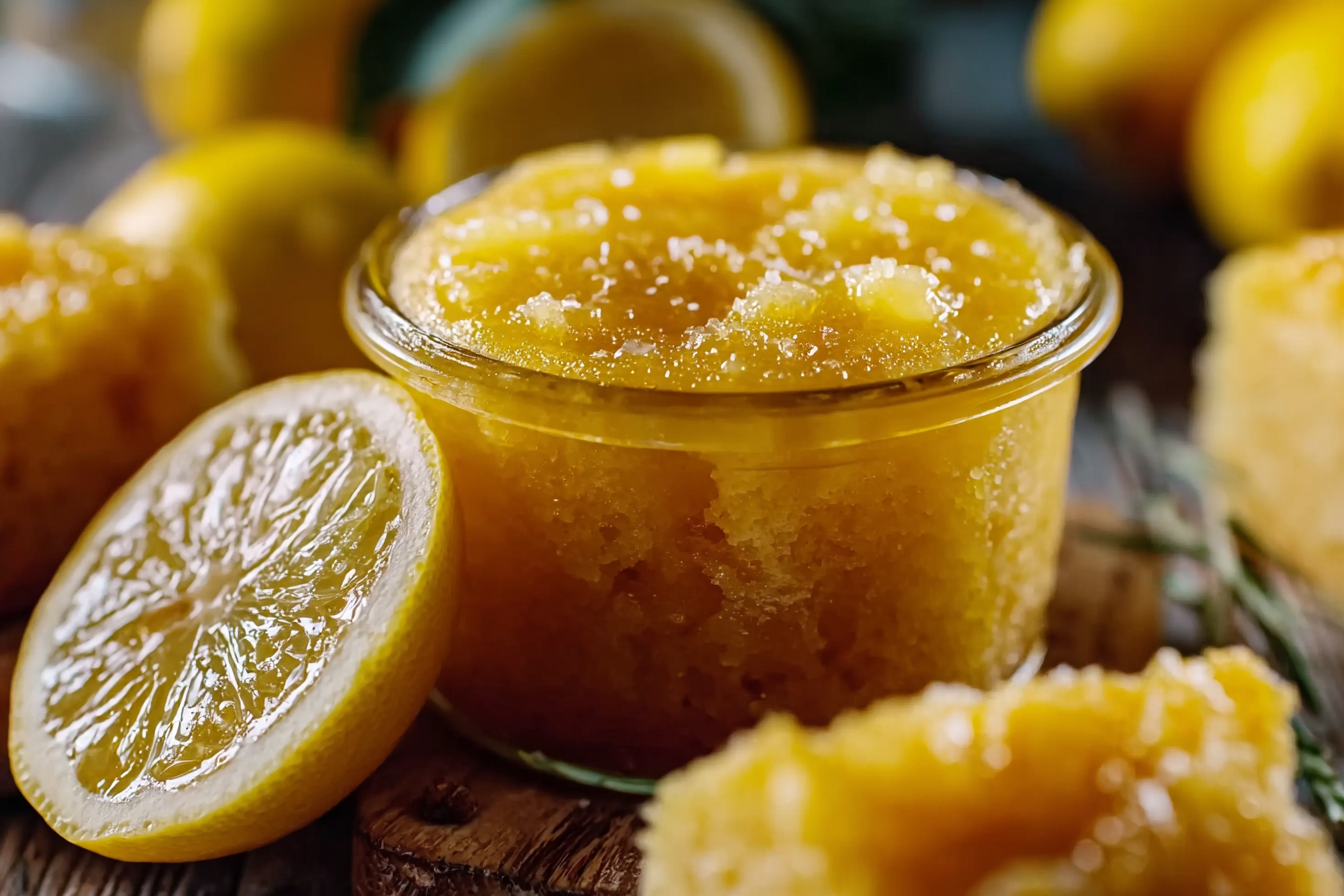Italian Lemon Jam is more than just a spread—it’s a tradition, a flavor, and a sunshine-filled memory sealed in a jar. This zesty-sweet delight brings together the vibrant aroma of citrus with just the right touch of sweetness, making it a must-have in any kitchen that values bold, authentic flavors. Whether you’re spreading it on fresh sourdough, swirling it into creamy yogurt, or pairing it with sharp cheeses, Italian Lemon Jam offers a depth of flavor that’s hard to beat.
At CookingFlash,About page , we believe every recipe should tell a story. Our journey with Italian Lemon Jam began in a little family kitchen nestled in the hills of Southern Italy. Our founder grew up watching her grandmother zest, stir, and bottle this glowing gold goodness every spring. That same heirloom recipe now lives on in our collection, preserved and perfected for modern kitchens across the globe. You’ll find our full story on the About page, where passion for food and heritage come together.
This article isn’t just another recipe. It’s a deep dive into everything you need to know about making traditional Italian lemon jam at home—from choosing the best lemons to troubleshooting texture. You’ll learn how to adapt the recipe with options like Italian lemon jam without pectin or Easy Meyer lemon jam, explore regional variations such as Greek lemon jam and Sicilian lemon marmalade recipe, and even pick up tips for Italian lemon jam for canning with perfect results every time.
And don’t worry, we’ll answer your burning questions too—like Can I use Meyer lemons for this recipe? or Why isn’t my lemon jam thickening? You’ll leave this article not only with a foolproof method but with the confidence to customize, store, and serve your lemon jam like a pro.
Don’t miss our Lemon Coconut Cheesecake Cookies if you’re craving even more citrusy dessert ideas. Or, check out Heavenly Lemon Zucchini Bread with Caramel Glaze—it’s another citrus celebration you’ll want to bookmark.
Now, let’s squeeze some sunshine and get started!
Table of Contents
Table of Contents
Picking the Right Lemons to Master Italian Lemon Jam
Why Lemon Choice Makes or Breaks Your Italian Lemon Jam
Italian Lemon Jam begins with one key ingredient—lemons. But not just any lemons will do. If you want that signature balance of brightness and depth that Italian kitchens are known for, you need to start with the right variety. Ideally, go for large, juicy lemons with smooth, thin skins. Organic lemons are best since you’ll be using the zest, and you want to avoid any wax or pesticide residue.
Ever wonder: Can I use Meyer lemons for this recipe? Definitely. In fact, Meyer lemons are a top choice for those seeking a naturally sweeter, less acidic flavor. They’re slightly floral, beautifully aromatic, and reduce the need for excess sugar. They’re the secret weapon behind many Easy Meyer lemon jam versions that don’t even need pectin.
For a truly Italian twist, try sourcing Amalfi or Sorrento lemons. These sun-kissed southern Italian fruits are famous for their fragrant oils and thick, flavorful peels—ideal for zesting and cooking into traditional Italian lemon jam recipes.
Curious cooks also explore: Traditional Italian lemon jam recipe, Greek lemon jam, Sicilian lemon marmalade recipe, Italian lemon jam without pectin
Prepping Lemons Like an Italian Grandmother Would
Before anything goes into the pot, prep your lemons properly. Wash each lemon under cool running water and gently scrub the skin to remove dirt and residue. Then dry them completely.
Use a fine microplane or zester to remove the vibrant yellow peel—this is where all the lemon’s aroma lives. Be careful not to zest too deep into the bitter white pith. Next, cut the lemons and squeeze out every drop of juice. Strain the juice to remove seeds or pulp. The combo of zest and fresh juice is what gives Italian Lemon Jam its authentic boldness.
This step might seem basic, but it’s the backbone of the jam. Skipping it—or doing it wrong—can leave your batch tasting flat or overly tart. Trust the process. Your tastebuds will thank you.
Looking for inspiration? Try our Lemon Curd Tartlets for another citrusy delight that complements lemon jam beautifully.
Lemon Prep Tips for Maximum Flavor in Your Jam
- Always zest before juicing—juicing first makes zesting harder.
- Choose ripe lemons that feel heavy for their size. That means more juice.
- Roll lemons on a countertop with light pressure to break the pulp before cutting.
- Avoid over-zesting—just the outer peel gives the jam its aroma.
You’re not just making any jam—you’re making Italian Lemon Jam, where every detail counts. Getting your citrus prepped right is the first step in building a preserve that’s vibrant, smooth, and straight out of a nonna’s kitchen.
Don’t miss our Lemon Mascarpone Stuffed Crepes—a perfect brunch companion for your fresh lemon jam!
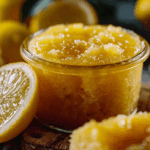
Italian Lemon Jam You’ll Love: The Best Tangy-Sweet Recipe Ever
- Prep Time: 15 minutes
- Cook Time: 40 minutes
- Total Time: 55 minutes
- Yield: 2 small jars (about 2 cups)
- Category: Condiment
- Method: Stovetop
- Cuisine: American
- Diet: Vegan
Description
This homemade lemon jam is bright, zesty, and perfectly sweetened. Made with fresh lemons, sugar, and a touch of vanilla, it’s a sunshine-filled spread perfect for toast, scones, or dolloping onto desserts.
Ingredients
- 4 large juicy lemons
- 2 cups white sugar
- 1 cup fresh water
- 1/2 teaspoon pure vanilla extract (optional)
Instructions
- Clean the lemons thoroughly under running water and pat them dry with a kitchen towel.
- Grate the outer yellow skin (zest) of the lemons and squeeze the juice, removing any seeds.
- In a cooking pot, combine the lemon juice, zest, sugar, and water. Stir until the sugar has dissolved.
- Turn the heat to medium and bring the mixture to a boil.
- Reduce heat to low and simmer for 30–40 minutes, stirring occasionally.
- Test the consistency by placing a spoonful on a cold plate. If it firms up, it’s ready. If it runs, continue cooking for a few more minutes.
- Remove from heat and let the jam cool slightly before transferring it into clean jars.
- Seal the jars tightly and allow them to cool completely before storing.
Notes
- Use only the yellow part of the zest to avoid bitterness from the white pith.
- Optional vanilla adds a subtle warmth to the citrusy flavor.
- Store in the fridge for up to 3 weeks or in the freezer for longer shelf life.
Nutrition
- Serving Size: 1 tablespoon
- Calories: 45
- Sugar: 11g
- Sodium: 0mg
- Fat: 0g
- Saturated Fat: 0g
- Unsaturated Fat: 0g
- Trans Fat: 0g
- Carbohydrates: 12g
- Fiber: 0g
- Protein: 0g
- Cholesterol: 0mg
The Essential Ingredients for Italian Lemon Jam (and Why They Matter)
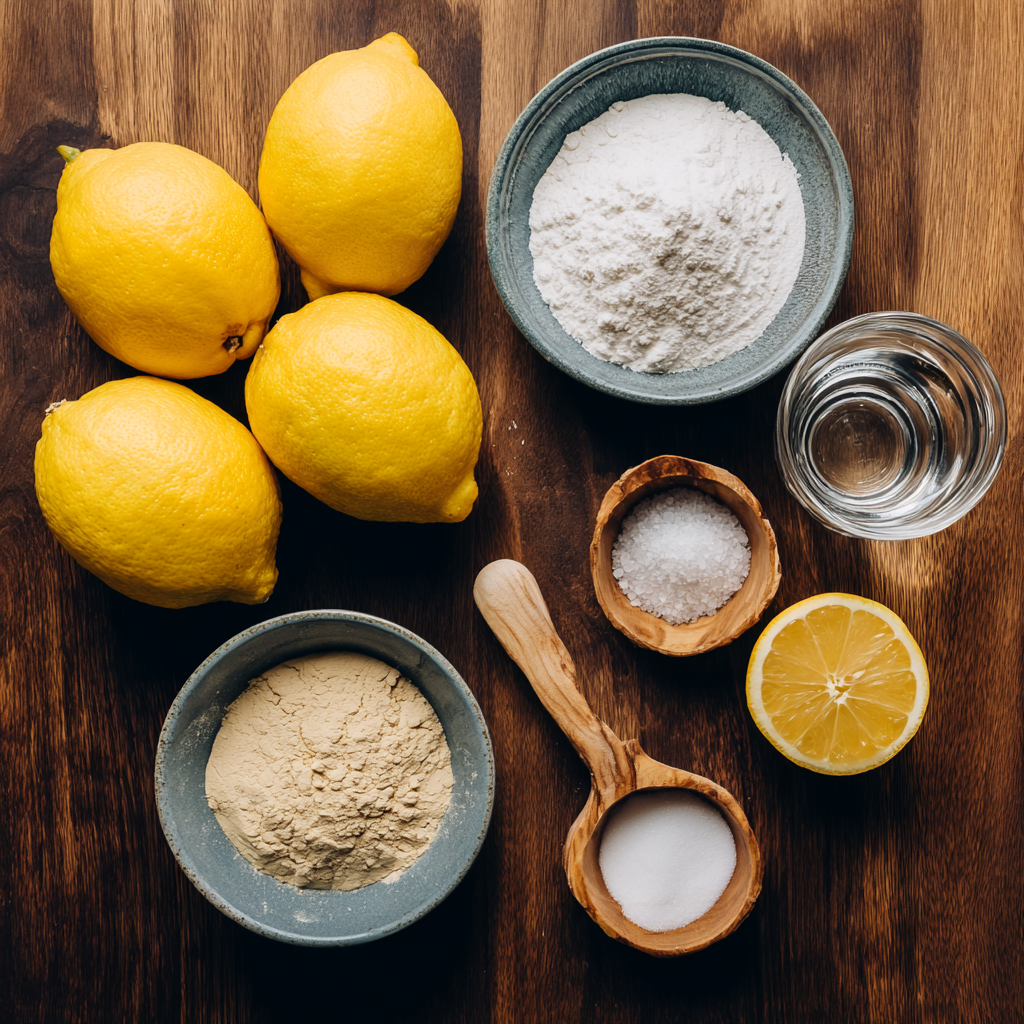
Why Every Ingredient Counts in Italian Lemon Jam
When you’re crafting a batch of homemade Italian Lemon Jam, it’s not just about throwing fruit and sugar in a pot. Each ingredient has a purpose—and skipping or altering one can completely change the outcome. This isn’t just jam, it’s a cultural staple packed into every spoonful. Whether you’re making a traditional Italian lemon jam recipe or going for an Italian lemon jam without pectin version, the right ingredients are the foundation of success.
Let’s break it down.
Lemons: The Star of the Show
Fresh lemons aren’t just the main ingredient—they’re the flavor, color, and aroma. You want ripe, juicy lemons with a bright yellow peel and a fresh citrus scent. Lemons are responsible for that signature tang and vibrant hue that make this jam instantly recognizable.
If you’re exploring variations, you might come across Greek lemon jam or Sicilian lemon marmalade recipes, which may include a mix of rind and pulp. In our case, we’re focusing on juice and zest to keep things smooth and spreadable.
Again, Meyer lemons offer a sweeter, more delicate flavor if you want to tone down the acidity. Just remember: Can I reduce the amount of sugar in this recipe? Only slightly—because lemons need sugar to balance their strong acidity and help the jam set.
People also search for: Easy Meyer lemon jam, Lemon peel jam, Lemon jam recipe with pectin
Sugar: The Balancing Act
You may be tempted to cut back on sugar, but be careful—sugar isn’t just about sweetness. It acts as a natural preservative and plays a critical role in thickening the jam. Without enough sugar, your Italian Lemon Jam might not reach that ideal gel-like texture.
If you reduce the sugar too much, you risk creating a syrup instead of a spread. The standard ratio of 2 cups of white sugar to 4 large lemons hits that sweet spot—literally and scientifically. This quantity allows the jam to preserve well and achieve the proper consistency during cooking.
Wondering how to fix jam that doesn’t set? See our next section on Why isn’t my lemon jam thickening?
Water: The Liquid Bridge
One cup of fresh water may seem basic, but it plays a vital role in ensuring your jam doesn’t burn or caramelize too quickly. Water helps the sugar dissolve evenly and gives your lemon mixture room to simmer slowly, coaxing out flavor without overwhelming the citrus with too much heat.
Skipping water or using too little will throw off the balance, making your jam sticky, overcooked, or even bitter. It’s not a filler—it’s a flavor diffuser.
Vanilla Extract: Optional, But Magical
Though not in every traditional Italian lemon jam recipe, ½ teaspoon of pure vanilla extract can give your jam a beautiful roundness. It softens the edge of the lemon’s brightness and adds a comforting warmth that pairs especially well with baked goods or over creamy desserts.
Adding vanilla doesn’t make it less Italian—it just gives it a modern twist. If you’re planning on Italian lemon jam for canning, adding it right at the end ensures the flavor holds up during storage.
Discover great ideas like our Creamy Garlic Crab-Stuffed Mushrooms for savory pairings with your jam on a cheese board!
Summary Table of Ingredients & Their Purpose
| Ingredient | Quantity | Purpose |
|---|---|---|
| Fresh Lemons | 4 large | Flavor, zest, acidity, natural pectin |
| White Sugar | 2 cups | Sweetness, preservation, gel formation |
| Fresh Water | 1 cup | Helps dissolve sugar, prevents burning, smooths consistency |
| Pure Vanilla Extract | ½ teaspoon (opt) | Adds aroma and depth (optional but flavorful) |
Each ingredient in Italian Lemon Jam is selected not just for taste, but for function. Together, they create a rich, vibrant jam that balances citrus brightness with a silky texture. Whether you’re new to jam making or an old pro, respecting these core elements makes all the difference between good and unforgettable.
Step-by-Step Method to Cook the Perfect Italian Lemon Jam
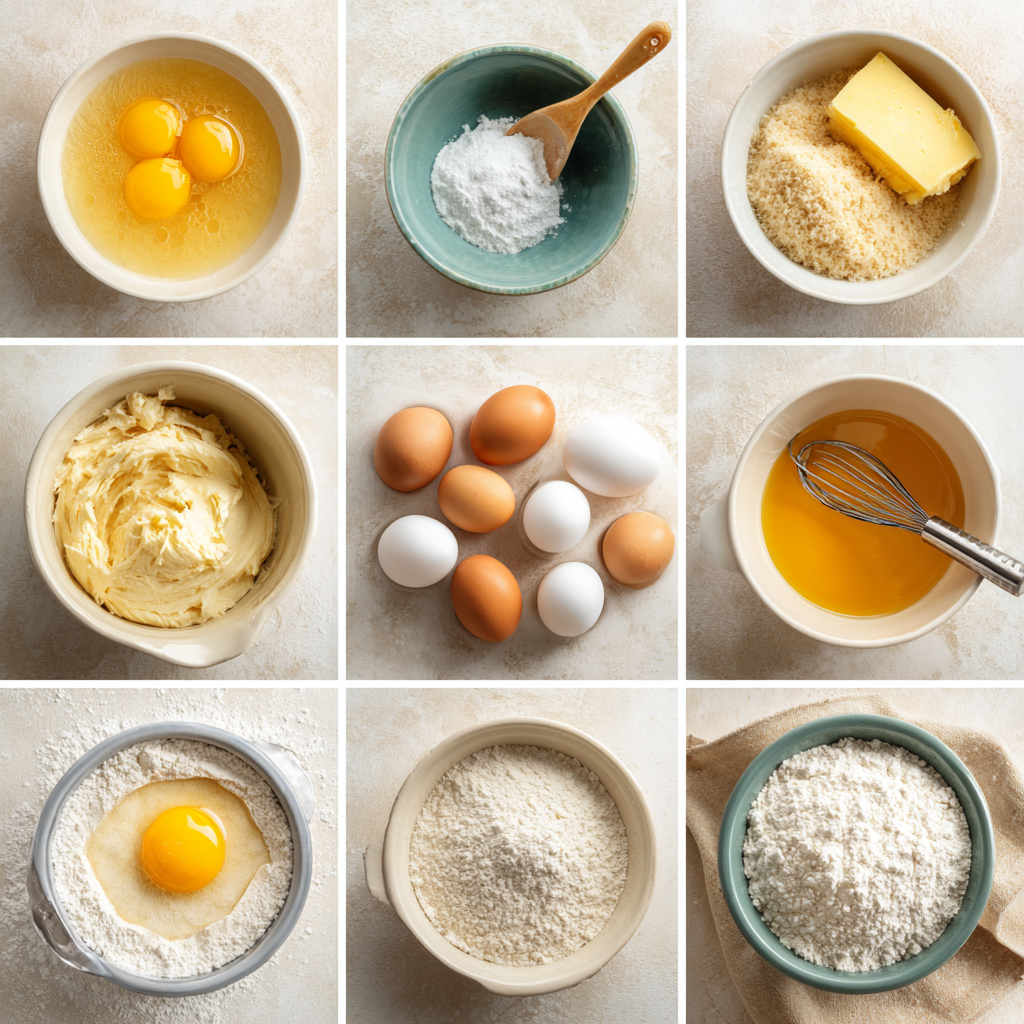
The Italian Way to Jam Perfection
Making Italian Lemon Jam at home is as satisfying as it is simple—when you know the right technique. You’re not just tossing ingredients together; you’re building layers of citrus flavor with care. From the first boil to the final jar seal, every step impacts taste, texture, and shelf life. Whether you’re trying a traditional Italian lemon jam recipe or experimenting with Italian lemon jam without pectin, following the right process ensures consistent, delicious results.
Let’s walk through the classic stovetop method.
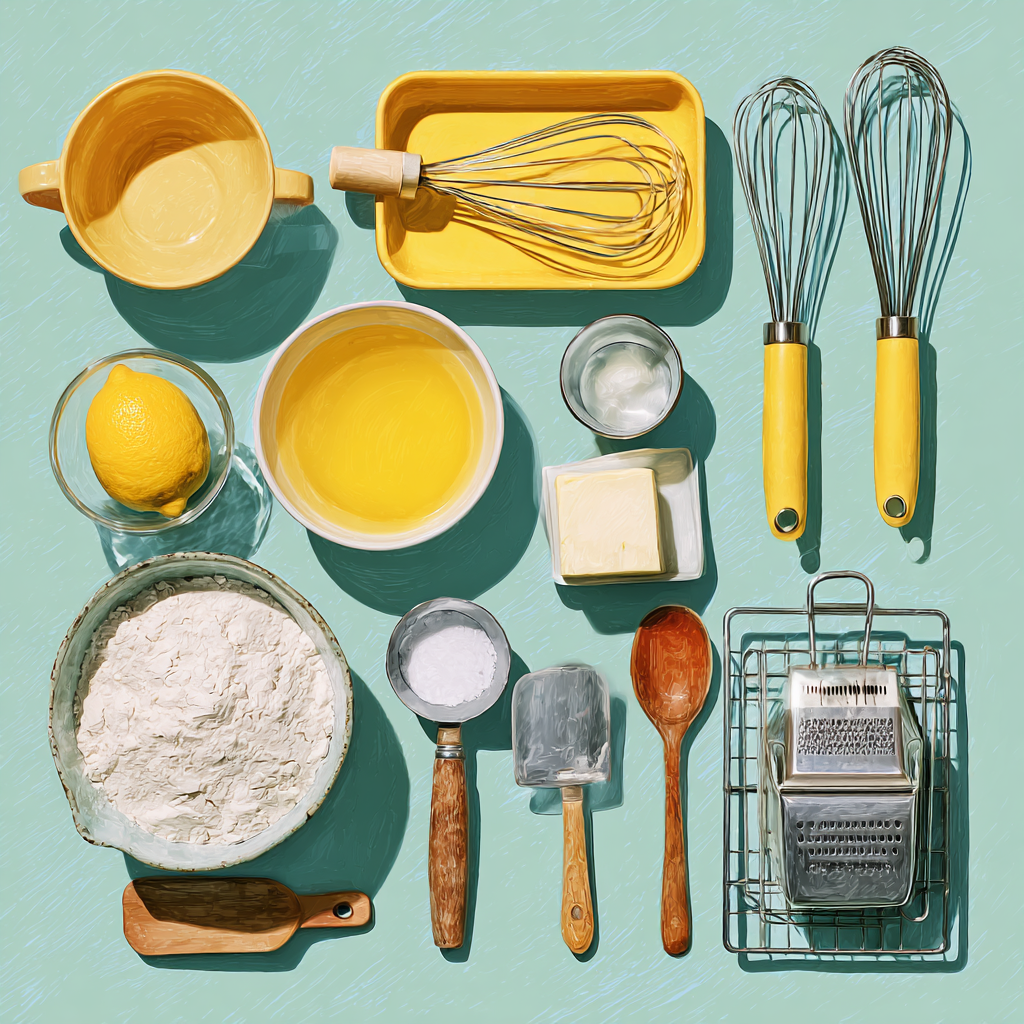
Step 1: Combine Your Ingredients
In a large, heavy-bottomed saucepan, mix the prepared lemon juice, grated zest, white sugar, and one cup of fresh water. Stir the mixture over low heat until the sugar dissolves completely. This slow melt avoids scorching and allows the lemon oils to infuse evenly.
Resist the urge to rush—this isn’t just chemistry; it’s an art. Getting the sugar to fully dissolve before boiling gives your jam a silkier finish.
Don’t miss our Crustless Coconut Pie—a delicate dessert that pairs beautifully with your freshly made lemon jam.
Step 2: Bring It to a Gentle Boil
Raise the heat to medium and let the mixture come to a rolling boil. As it heats, the natural pectin in the lemon zest and juice begins to activate. You’ll start to see small bubbles and a slightly thicker texture.
Stir frequently to prevent burning at the bottom of the pot. This stage is where many beginners go wrong—either undercooking and ending up with lemon syrup or overheating and caramelizing the sugar, which gives your jam a bitter edge.
This is where some also wonder: Why isn’t my lemon jam thickening? The answer usually lies in heat level, cooking time, or imbalance in the sugar-acid ratio. Keep it steady and be patient.
Looking for inspiration? Try our No-Bake Strawberry Jell-O Pie for a summer dessert topped with a swirl of lemon jam.
Step 3: Simmer and Test for Doneness
Once you hit a full boil, reduce the heat and let the jam simmer for 30–40 minutes. Stir occasionally to maintain an even texture and avoid sticking. As it cooks down, the liquid will reduce and the mixture will slowly thicken.
To check if your jam is ready, place a small plate in the freezer for a few minutes. Then drop a spoonful of jam onto the cold plate and let it sit for 30 seconds. If it wrinkles slightly when pushed with a spoon or your finger, it’s done. If it runs like syrup, simmer for a bit longer and test again.
This “cold plate test” mimics how jam behaves when fully cooled and lets you avoid overcooking.
Step 4: Cool Slightly and Jar the Jam
Once your Italian Lemon Jam passes the plate test, remove the pan from heat and let it cool for 5–10 minutes. This helps prevent condensation inside the jars, which can lead to spoilage.
Use a clean funnel and sterilized jars to ladle in the jam. Wipe the rims, seal tightly with clean lids, and allow the jars to cool fully at room temperature.
For longer shelf life, you can water-bath can the jars—but for most home uses, tightly sealed jars stored in the fridge are perfect.
Discover great ideas like our Glazed Fruitcake Shortbread Cookies, which taste incredible with a lemon jam glaze on top!
Bonus Tip: Add Vanilla at the End
If you’re using the optional vanilla extract, stir it in after removing the pan from heat. This preserves the flavor and gives your jam a warm, comforting note without overpowering the lemon.
Quick Summary of the Cooking Process
| Step | Action | Time | Tip |
|---|---|---|---|
| 1 | Mix juice, zest, sugar, and water | 5–10 mins | Dissolve sugar fully before heat |
| 2 | Bring to boil and stir regularly | 10 mins | Watch for foaming and bubbling |
| 3 | Simmer and test using cold plate method | 30–40 mins | Don’t rush—check thickness |
| 4 | Cool, jar, and seal | 10–15 mins | Use sterilized jars only |
| 5 | Optional: Add vanilla extract | Final step | Add after heat for best flavor |
From the first slow stir to the final seal, this method guarantees a jar of Italian Lemon Jam that’s thick, tangy, sweet, and packed with old-world charm. Whether you spread it on warm toast or gift it to friends, it’s a homemade masterpiece worth every minute.
How to Store Italian Lemon Jam the Right Way for Long-Lasting Flavor
Don’t Let Your Lemon Jam Go to Waste—Store It Like a Pro
Making Italian Lemon Jam from scratch is a labor of love, so storing it properly ensures that all your hard work pays off in every bite—days, weeks, even months later. The key to long-lasting flavor and safety lies in how you cool, seal, and store your jam. Whether you’re refrigerating a single jar or preserving a whole batch for the year, the storage method matters.
So, what’s the best way to store lemon jam? The short answer: It depends on how long you want it to last. Let’s break down the best practices for both short-term and long-term storage options.
Refrigerator Storage for Fresh Enjoyment
If you’re making a small batch and plan to eat it within a few weeks, the fridge is your best bet. After the jam has cooled slightly, transfer it into clean glass jars with tight-fitting lids. Store it in the refrigerator once it has reached room temperature.
Properly refrigerated Italian Lemon Jam stays fresh for about 2 to 3 weeks. Be sure to use a clean, dry spoon every time you scoop—this helps prevent contamination and keeps your jam fresh and flavorful until the last spoonful.
Looking for inspiration? Try our Lemon Poppyseed Zucchini Muffins—a perfect match with a dollop of chilled lemon jam.
Shelf-Stable Storage with Canning Techniques
Planning to enjoy your jam throughout the year or share it with friends? Then water-bath canning is the way to go. Fill sterilized jars with hot jam, seal tightly, and submerge them in boiling water for 10–15 minutes. This creates an airtight seal that protects your jam from spoilage.
Once sealed and cooled, store your jars in a cool, dry place, like a pantry or cupboard. Properly canned lemon jam can last up to 12 months, retaining its zesty flavor and smooth texture. Make sure to label each jar with the date and batch for easy tracking.
Many traditional Italian lemon jam for canning recipes also recommend using slightly underripe lemons, as they contain more natural pectin and help the jam set better for long-term storage.
Don’t miss our Preserved Lemon Roasted Chicken for another way to make the most of your citrus pantry!
How to Tell If Your Jam Has Spoiled
Even well-sealed jam can spoil if not handled or stored correctly. Watch out for these signs:
- Mold or discoloration on the surface
- A sour or fermented smell
- Bubbling liquid or bulging lid
- Watery or gritty texture
If you notice any of these signs, it’s safer to discard the jar. When it comes to food safety, it’s better not to take chances.
Pro Storage Tips for Homemade Lemon Jam
- Sterilize your jars before filling, even if refrigerating.
- Leave headspace—about ¼ inch at the top of each jar.
- Cool completely before refrigerating or storing in your pantry.
- Label every jar with the date, and rotate older jars forward.
Whether you’re planning to enjoy it within days or savor it throughout the seasons, proper storage keeps your Italian Lemon Jam safe, delicious, and spreadable for every moment. From morning toast to dessert toppings, the vibrant citrus zing will stay intact when your jars are sealed and stored with care.
Fixing Common Mistakes When Making Italian Lemon Jam
Why Even Simple Jams Deserve Smart Techniques
Crafting a flawless jar of Italian Lemon Jam doesn’t take magic—it takes technique. While the ingredient list is short and sweet, the process demands precision. A few small missteps can result in a jam that’s too thin, too bitter, or simply not shelf-stable.
One of the most frequent frustrations among jam-makers? Why isn’t my lemon jam thickening? Don’t worry—you’re not alone. Below, we’ll break down the most common errors and how to prevent them so your next batch is smooth, golden, and spread-worthy.
Mistake #1: Your Jam Won’t Set
If your jam is watery or syrup-like even after cooling, it’s likely one of three things went wrong:
- You didn’t cook the jam long enough.
- You didn’t use enough sugar to activate the natural pectin.
- You added too much water during the boiling stage.
Lemons contain natural pectin, especially in the zest and peel, which helps the mixture gel. However, it only works if the balance between fruit, sugar, and cooking time is right. To test readiness, use the classic freezer plate method: drop a spoonful of jam on a cold plate, wait 30 seconds, and press it. If it holds a wrinkle, it’s done. If it runs, give it more time on the stove.
Looking for a foolproof pairing? Try our Cheesy Garlic Butter Rollups with a swipe of thick lemon jam.
Mistake #2: Overheating or Rushing the Cook
Cranking up the flame might seem like a good way to get things done quickly, but it can ruin your batch. High heat causes sugars to caramelize and gives the jam a bitter taste. It may also lead to uneven consistency or cause the bottom to burn.
Stick with a low, steady simmer and stir regularly. Cooking slowly allows the flavors to develop and gives the jam its rich texture without overcooking the fruit or sugar.
Mistake #3: Including Too Much White Pith
When zesting your lemons, avoid digging into the white layer beneath the peel. This bitter pith can overpower the flavor and turn your sweet citrus spread into a harsh-tasting preserve. Always use a light touch with a microplane or fine grater—just the colorful outer skin is what you want.
This mistake is common in recipes that also reference lemon peel jam, where more rind is used intentionally. For a classic Italian Lemon Jam, subtle zest is best.
Mistake #4: Skipping the Consistency Check
Many cooks simply rely on the timer—but jam’s readiness isn’t about minutes, it’s about texture. That’s why the freezer plate method is essential. If you skip this step, your jam may seem fine while hot, only to end up thin and runny after cooling.
Patience pays off. Check your jam at the 30-minute mark and every few minutes after until it passes the test.
Don’t miss our Lemon Mascarpone Stuffed Crepes for a brunch idea that was made for a spoonful of jam.
Mistake #5: Poor Jar Prep and Sealing
Even perfectly cooked jam can spoil early if you store it in unclean jars or skip sealing steps. Always sterilize jars and lids before use. Wipe rims after filling, and allow the jam to cool slightly before sealing—this helps reduce steam and prevents mold from forming inside the lid.
If you’re making Italian lemon jam for canning, using the water-bath method for long-term preservation is a must.
Mistake #6: Reducing Sugar Too Much
In citrus-based jams, sugar isn’t just for taste—it’s structural. Too little sugar means your jam won’t thicken properly or last long in storage. It also weakens the preserving power of the jam, especially in no-pectin recipes.
If you want a reduced-sugar version, stick to small batches stored in the refrigerator and consume within a couple of weeks.
Discover great ideas like our Golden Breaded Chicken Parmesan and try it with a lemon jam glaze for a sweet-savory twist.
Wrap-Up: Small Fixes, Big Results
Making Italian Lemon Jam might seem simple, but skipping the details can mean the difference between a rich, spreadable preserve and a kitchen disappointment. From balancing sugar to timing your simmer, these small tips ensure you capture the bold, bright flavor of real Italian citrus in every jar.
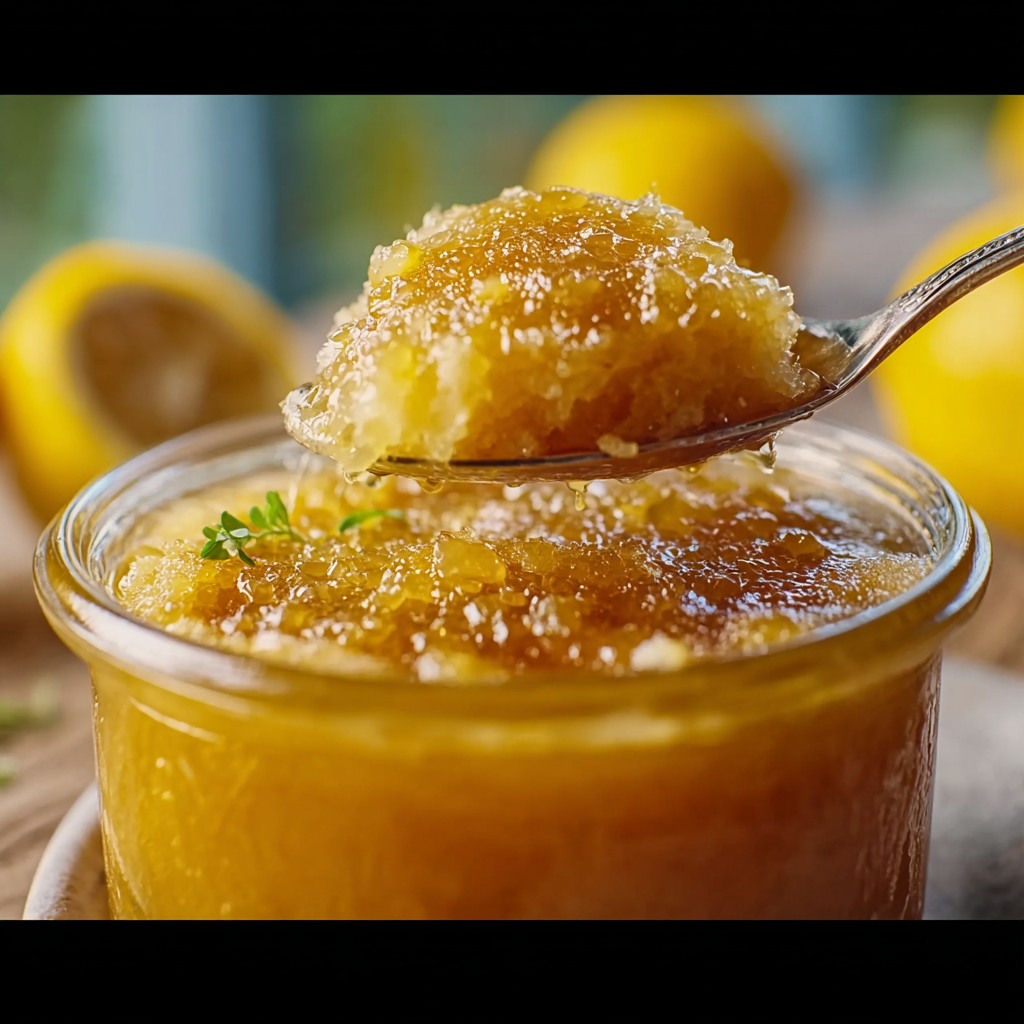
Unique Ways to Use Italian Lemon Jam Beyond the Usual Toast
Think Beyond the Bread—This Jam’s Flavor Is Limitless
Sure, Italian Lemon Jam on toast is a morning ritual many adore. But this bright, zesty jam can do so much more. Its balance of tart and sweet makes it a versatile player in both sweet and savory recipes. Whether you’re using a traditional Italian lemon jam recipe or trying a batch of Italian lemon jam without pectin, there’s no limit to how you can enjoy it.
Let’s explore creative, everyday ways to bring your homemade lemon jam to life—no toast required.
1. Start Your Day With a Citrus Kick
Go beyond buttered bread. Stir a spoonful of lemon jam into plain yogurt, fold it into oatmeal, or drizzle over waffles. Add it to smoothies or parfaits for a vibrant citrus pop. For weekend brunch, try spooning it over pancakes or baking it into lemon breakfast muffins.
And if you’re making easy Meyer lemon jam, its naturally sweet flavor is especially great for lighter breakfast dishes.
Looking for inspiration? Try our Lemon Poppyseed Zucchini Muffins with a side of lemon jam.
2. Upgrade Simple Desserts in Seconds
Italian Lemon Jam works beautifully in desserts—especially when you’re short on time. Swirl it into cheesecake batter before baking, spoon it over vanilla ice cream, or add it between cake layers for a surprise burst of flavor. It also makes an easy tart filling or a glaze for lemon loaves and sponge cakes.
Try it with pastries made from puff pastry dough for an elegant finish. Many bakers use it in place of lemon curd for a deeper, more jammy flavor.
Don’t miss our Baby Lemon Impossible Pies—elevated with a touch of lemon jam baked right in.
3. Make Savory Dishes Shine
Surprise: lemon jam works magic with savory meals. Use it as a glaze for chicken thighs, grilled shrimp, or pork tenderloin. It balances out salty meats and gives dishes a caramelized finish when roasted.
Mix it into salad dressings or use it to deglaze a skillet for a quick pan sauce. If you’re experimenting with flavors from a Greek lemon jam or lemon jam with pectin, try bolder pairings like lamb or smoked fish.
Try our Preserved Lemon Roasted Chicken and enhance it with a lemon jam glaze during the final roast.
4. Add a Sweet Touch to Your Cheese Plate
A spoonful of Italian Lemon Jam on a cheeseboard can elevate your whole spread. Its citrus brightness pairs well with creamy cheeses like goat cheese or ricotta, and it offers a lovely contrast to sharp aged cheeses like Parmesan or manchego.
Serve it with crusty bread, crackers, olives, and a drizzle of honey for a complete Mediterranean moment.
5. Use It in Unexpected Beverages
Jam in drinks? Absolutely. Stir it into hot black or green tea for a built-in citrus sweetener. Or shake it into cocktails—combine it with vodka and soda water, or with gin, lemon juice, and thyme for a rustic twist on a lemon spritz.
You can even mix it into lemonade to deepen the citrus profile.
Don’t miss our No-Bake Strawberry Jell-O Pie—an easy dessert to serve with a glass of sparkling lemon jam spritz.
6. Reinvent Snack Time with a Zesty Upgrade
Add a spoonful of lemon jam to crackers with cream cheese, spread it inside a warm croissant, or dip fruit slices like apples or pears for a refreshing snack. It also works as a filling for crescent rolls or pinwheels.
Even a simple rice cake becomes something special when topped with almond butter and a swipe of lemon jam.
Try our Strawberry Crunch Cheesecake Chunks with a citrusy twist from a drizzle of lemon jam.
7. Boost Sauces and Marinades with Brightness
Lemon jam is the secret to deep flavor in glazes, marinades, and sauces. Mix it with mustard and olive oil for a fast vinaigrette, or whisk it into a honey-based marinade for roasted veggies. Add a tablespoon to your next stir-fry sauce for an unexpected kick.
This is especially useful when using jam variations like Sicilian lemon marmalade, which carry more rind and complexity.
Quick Recap: 7 Creative Uses for Italian Lemon Jam
| Meal Type | Lemon Jam Pairing Ideas |
|---|---|
| Breakfast | Yogurt, oatmeal, muffins, parfaits |
| Desserts | Cheesecake, ice cream, tarts, pastries |
| Savory Dishes | Chicken, seafood, salad dressings, glazes |
| Cheese Boards | Brie, goat cheese, sharp cheddar, olives |
| Drinks | Tea, lemonade, vodka cocktails, spritzers |
| Snacks | Crackers, croissants, fruit, rice cakes |
| Sauces & Marinades | Stir-fry sauce, vinaigrettes, pork and veggie glazes |
Italian Lemon Jam is one of those pantry ingredients that surprises you with its range. From morning to midnight snacks, it blends citrus tang and natural sweetness in a way that enhances almost anything it touches. Get creative—and don’t be afraid to use every last spoonful.
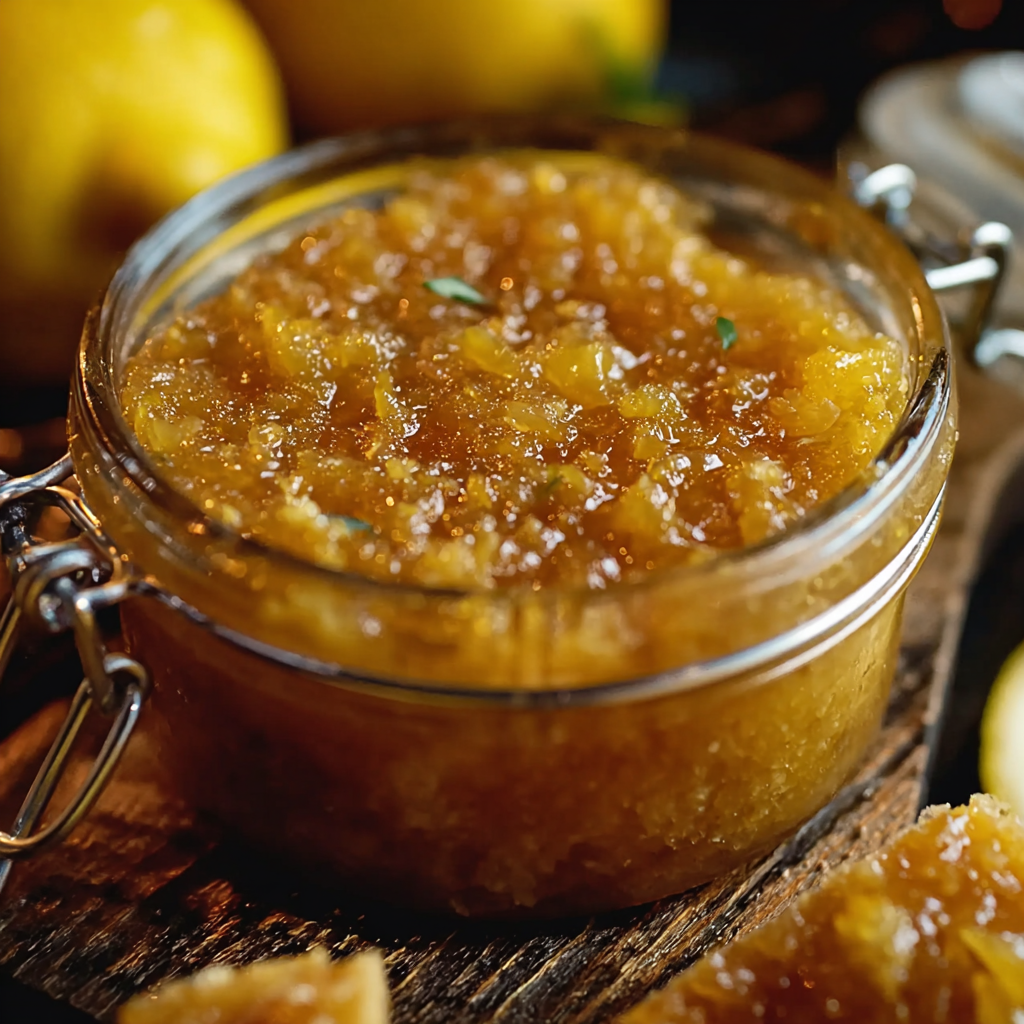
Personalize Your Italian Lemon Jam With Delicious Add-Ins and Creative Flavors
Turn a Classic Citrus Jam Into Your Signature Flavor
Once you’ve made your first jar of classic Italian Lemon Jam, it’s easy to see why it’s a favorite in kitchens across Italy—and beyond. But what if you could go one step further? What if you could customize that bright, zesty flavor with herbs, spices, or other fruits?
Luckily, you can. Whether you’re following a lemon jam recipe with pectin or crafting your own Italian lemon jam without pectin, there are endless ways to tailor the flavor to your taste. From floral to spicy to fruity, the mix-in possibilities are as bold or subtle as you want them to be.
Let’s look at how to build your own signature lemon jam blend, starting with the best ways to add personality without losing that classic citrus kick.
1. Infuse with Fresh Herbs
Fresh herbs bring complexity and depth to your jam. As it simmers, the natural oils from herbs release into the mixture, giving your jam a subtle savory note that works beautifully in both sweet and savory pairings.
Some popular herb combos include:
- Lemon + Thyme – Adds a slightly earthy tone, ideal for meats or cheese plates.
- Lemon + Rosemary – Woodsy and aromatic, great for holiday gifts or roast glazes.
- Lemon + Mint – Refreshing and light, perfect in spring pastries.
Herb-infused lemon jams pair well with soft cheeses and crackers or in glazes for roasted chicken or fish.
Looking for inspiration? Our Preserved Lemon Roasted Chicken would be amazing with a rosemary-lemon jam glaze.
2. Add a Touch of Warm Spice
Spices give your lemon jam a comforting edge, especially during colder months. Just a pinch can change the entire vibe of the jar.
Here are flavorful ideas to try:
- Cinnamon – Adds cozy sweetness to make the jam perfect for baking.
- Ginger – Brings warmth and zing, especially nice with Greek lemon jam styles.
- Clove or Nutmeg – A holiday twist great for gifting in winter.
To avoid overpowering the citrus, start with a small amount and add more to taste as the jam cooks.
Discover great ideas like our Golden Breaded Chicken Parmesan, which pairs beautifully with a ginger-lemon jam glaze.
3. Layer in Edible Flowers
Want a more elegant jam? Edible florals can give your lemon spread a soft, fragrant finish that feels gourmet and pairs wonderfully with tea, cookies, or soft cheeses.
Try these floral add-ins:
- Dried Lavender Buds – Pair well with Meyer lemons and give a soft, calming scent.
- Rose Petals – Add color and a romantic flair for special occasions.
- Chamomile – Subtle, earthy, and ideal for breakfast or tea-time spreads.
Just make sure to use food-grade, pesticide-free flowers. Add them near the end of cooking to preserve their fragrance.
4. Mix in Other Fruits for Bold Flavor Combos
Lemon doesn’t have to shine alone. It plays beautifully with other fruits—especially in jams. Adding a second fruit can help soften the acidity while boosting sweetness and texture.
Popular combinations:
- Strawberry + Lemon – A timeless favorite with layered tart and sweet notes.
- Blueberry + Lemon – Deep color and flavor, great for cheesecakes or pancakes.
- Peach + Lemon – A mellow, summer-friendly pairing perfect on scones.
If you’re working from a lemon peel jam recipe, mixing in soft fruits like berries can help balance bitterness while creating a smoother finish.
Check out our Strawberry Crunch Cheesecake Chunks—made even better with a lemon-berry jam topping.
5. Change Up the Sweetener
Traditional Italian Lemon Jam is made with white sugar, but switching your sweetener adds a whole new dimension of taste.
Try these natural options:
- Honey – Adds floral depth and richness; pairs beautifully with thyme or ginger.
- Maple Syrup – Earthy and warm, excellent for fall variations.
- Coconut Sugar – Slightly caramel-like, ideal for lower glycemic options.
Note: Using alternative sweeteners may affect the jam’s thickness. Consider adding pectin if needed to achieve the right texture.
6. Add Texture with Nuts or Seeds
A little crunch goes a long way. Add-ins like seeds or finely chopped nuts not only improve texture but also add nutrition and uniqueness.
Ideas include:
- Poppy Seeds – Add a bit of crunch and visual appeal.
- Crushed Pistachios – Nutty and creamy, wonderful with Sicilian lemon marmalade.
- Chia Seeds – Great for natural thickening and fiber boost.
These textures make the jam more interesting on toast, and perfect for layering in yogurt or parfaits.
Don’t miss our Lemon Coconut Cheesecake Cookies—pair them with lemon-chia jam for an extra health boost.
Pro Tips for Flavored Jam Success
- Add mix-ins at the right time – Herbs and flowers go in late to preserve flavor.
- Don’t overdo it – A small amount can change the whole profile.
- Test in small batches – Try new flavors with a small jar before scaling up.
At-a-Glance Flavor Combinations
| Add-In Type | Flavor Ideas | Suggested Use |
|---|---|---|
| Fresh Herbs | Thyme, rosemary, mint | Cheese boards, savory meats |
| Warm Spices | Cinnamon, ginger, nutmeg | Cookies, toast, holiday spreads |
| Florals | Lavender, rose petals, chamomile | Teatime, brunch, special occasion jars |
| Fruit Blends | Strawberry, blueberry, peach | Baking, breakfast, yogurt mix-ins |
| Sweetener Swap | Honey, maple syrup, coconut sugar | Natural or low-glycemic jam options |
| Texture Additions | Poppy seeds, pistachios, chia seeds | Snacks, desserts, parfait |
Customizing your Italian Lemon Jam is a fun and easy way to make something truly personal. Whether you’re gifting jars during the holidays or trying something new for breakfast, these mix-ins turn every batch into a one-of-a-kind creation. Let your kitchen creativity shine.
The Best Lemons for Italian Lemon Jam – What Really Works Best?
Choosing the Right Lemons Makes All the Difference
When making Italian Lemon Jam, not all lemons are created equal. The variety you choose can dramatically affect your jam’s flavor, color, texture, and even the final set. Whether you’re sticking to a traditional Italian lemon jam recipe or branching out with a lemon jam without pectin, your lemons are the foundation of everything.
So let’s settle the question many home cooks ask…
Can I Use Meyer Lemons for This Recipe?
Yes—you can absolutely use Meyer lemons when making Italian lemon jam! In fact, many people prefer them because of their naturally sweet, floral flavor and lower acidity. Meyer lemons are a cross between regular lemons and mandarins, which makes them less tart and a bit more fragrant.
However, there are a few things to keep in mind:
- Less Pectin: Meyer lemons have slightly less natural pectin, so if you’re skipping added pectin, you may need to simmer your jam longer to help it thicken properly.
- Softer Zest: Their thin skin and soft pith are easier to work with when grating zest.
- Sweeter Flavor: If you use Meyer lemons, consider reducing the sugar slightly to balance the sweetness.
Many easy Meyer lemon jam recipes focus on simplicity and natural flavor, making them ideal for first-time jam makers.
Don’t miss our Baby Lemon Impossible Pies—they’re incredible with a dollop of Meyer lemon jam on top.
Other Lemon Varieties to Consider
If Meyer lemons aren’t available or you want something closer to the traditional southern Italian flavor, here are a few other varieties that work beautifully:
1. Eureka Lemons
The most common lemon found in U.S. grocery stores, Eureka lemons are sharp, tangy, and full of pectin—great for jam that sets easily. Their thick rind also makes them ideal for lemon peel jam or Sicilian lemon marmalade, where both the zest and pith play a role in flavor and texture.
2. Lisbon Lemons
Lisbon lemons are nearly identical to Eurekas but often more acidic. They’re fantastic if you want a jam with a bold, tart profile that really wakes up the palate. These are great for pairing with herbs like rosemary or thyme.
3. Femminello Lemons (Italian Lemons)
Native to southern Italy, especially the Amalfi Coast and Sicily, Femminello lemons are the gold standard for authentic Italian Lemon Jam. They’re slightly more aromatic and offer high juice content with rich, balanced acidity.
Want an authentic Southern Italian twist? Use Femminello lemons in our Preserved Lemon Roasted Chicken recipe and spoon some jam on top as a finishing glaze.
Tips for Picking the Right Lemons at the Store
No matter which variety you choose, here’s how to make sure your lemons are jam-worthy:
| Trait | What to Look For |
|---|---|
| Firmness | Choose lemons that feel heavy and firm for their size. |
| Skin Texture | Smooth, bright skin means more zest and juice. |
| Fragrance | A fresh, strong citrus scent = flavorful oils and zest. |
| Thin Skinned (Optional) | Easier to slice and faster to break down when cooking. |
Avoid waxed lemons when possible, especially if you’re using the zest. Always wash lemons thoroughly before zesting or juicing.
What If I Want to Blend Lemon Varieties?
Go for it! In fact, blending two types of lemons is a great way to balance tartness and sweetness. For example:
- Meyer + Lisbon: Combines floral sweetness with high acidity.
- Eureka + Femminello: Boosts traditional flavor and juice content.
- Meyer + Orange or Grapefruit: Ideal for making a hybrid citrus jam that leans into complexity.
If you’re experimenting with a lemon jam recipe with pectin, blended varieties still work well—just be sure to measure your juice-to-sugar ratio carefully for consistent results.
When to Avoid Using Certain Lemons
While rare, some store-bought lemons are heavily waxed or treated with preservatives that can alter taste or reduce shelf life in jams. If you’re making jam for canning or long-term storage, organic, unwaxed lemons are best.
Final Takeaway: Choose Lemons With Purpose
Whether you’re after the bold tang of Eureka, the delicate sweetness of Meyer, or the heritage-rich aroma of Italian Femminello, your lemon choice will define your jam. Selecting the right lemon is about understanding how its flavor, pectin level, and zest intensity fit your vision of the perfect Italian Lemon Jam.
How to Store Italian Lemon Jam Properly and Keep It Fresh for Months
Extend the Life of Your Homemade Lemon Jam With Smart Storage
After crafting the perfect batch of Italian Lemon Jam, storing it correctly is the key to preserving both flavor and safety. Whether you’re making a small jar for your morning toast or preparing multiple batches of Italian lemon jam for canning, how you store your jam matters just as much as how you make it.
So, what’s the best way to store lemon jam to keep it tasting fresh? Let’s walk through the options—from fridge storage to freezer techniques and pantry-safe canning.
Refrigerator Storage: Best for Small Batches
If you’ve made a quick-cook jam or a batch of lemon jam without pectin, storing it in the refrigerator is both safe and simple.
Here’s what to do:
- Use sterilized, airtight glass jars or food-grade containers.
- Let the jam cool to room temperature before sealing.
- Label jars with the date and refrigerate immediately.
Lifespan: Typically, refrigerated jam stays fresh for 3 to 4 weeks. For best results, always use a clean spoon to prevent contamination.
Don’t miss our Heavenly Lemon Zucchini Bread—it’s extra delicious with a spoonful of cold lemon jam spread on top.
Pantry Storage: Ideal for Long-Term Canning
If you’re making Italian lemon jam for canning, you’ll need to preserve it using a water-bath method. This process allows you to store jam at room temperature for up to a year—perfect for gifts or long-term use.
Canning Process in a Nutshell:
- Sterilize jars in boiling water for 10 minutes.
- Pour hot jam into warm jars, leaving about 1/4 inch at the top.
- Wipe rims clean, place sterilized lids, and seal tightly.
- Process jars in a boiling water bath for 10 minutes.
- Cool completely before storing in a cool, dark cupboard.
Make sure you hear a “pop” sound—this confirms your jar is sealed.
Check out our Lemon Coconut Cheesecake Cookies—a great dessert to pair with homemade canned jam.
Freezing Jam: A No-Fuss Option
Freezing is a great alternative if you’re not into canning. It works well for homemade lemon jam, especially if you’ve used lower sugar or no pectin.
How to freeze jam:
- Let jam cool fully.
- Spoon into freezer-safe jars or containers (leave 1/2 inch for expansion).
- Seal tightly, label, and freeze.
Lifespan: Frozen jam lasts 6 to 8 months and thaws in the fridge overnight.
Want to enjoy jam straight from the freezer? Our Strawberry Crunch Cheesecake Chunks are perfect with a thawed jam drizzle.
How Long Does Homemade Lemon Jam Really Last?
Depending on your storage method, your Italian Lemon Jam can stay fresh for weeks—or even months. Here’s a breakdown:
| Storage Type | Estimated Shelf Life | Notes |
|---|---|---|
| Refrigerator | 3–4 weeks | Great for no-pectin or low-sugar jams |
| Freezer | 6–8 months | Use freezer-safe containers; leave space for expansion |
| Pantry (Canned) | 6–12 months | Requires sterilized jars and proper canning method |
Keep an eye out for signs of spoilage like bubbling, unusual odor, or mold. If you notice anything off, toss the jar—better safe than sorry.
Top Storage Tips for Success
- Always label your jars with the production date and ingredients.
- Store canned jars in a cool, dry place away from sunlight.
- Once opened, always refrigerate and consume within 2–3 weeks.
- Never double-dip—use a clean spoon every time.
By storing your jam properly, you not only protect its flavor but also prevent spoilage—so you can enjoy every last spoonful with peace of mind.
Master the Art of Italian Lemon Jam at Home
Making Italian Lemon Jam at home isn’t just about preserving citrus—it’s about capturing the soul of Mediterranean simplicity in a jar. With just a few fresh lemons, some sugar, and a touch of creativity, you’ve learned how to create a spread that bursts with bright, tangy flavor and endless versatility.
Whether you followed a traditional Italian lemon jam recipe, experimented with Sicilian lemon marmalade, or tried a low-sugar version without pectin, every batch you make can be uniquely your own. From breakfast toast to cheese platters, desserts to marinades, this jam is more than a sweet treat—it’s a flavor powerhouse with roots in Italian tradition.
You now know how to choose the best lemons, personalize your recipe with herbs and spices, and store your jam safely—whether in the fridge, freezer, or pantry. Armed with this knowledge, you’re ready to elevate your homemade preserves and surprise your guests (or yourself!) with every spoonful.
So go ahead—grab those lemons, start simmering, and let your kitchen fill with the bright aroma of fresh, zesty citrus. Your perfect jar of Italian Lemon Jam is just one stir away.
Looking for your next sweet pairing? Try our Strawberry Crunch Cheesecake Chunks or Lemon Coconut Cheesecake Cookies topped with a spoonful of your homemade jam.Tray this :Lemon Blondies
How long does homemade lemon jam last?
The shelf life of your Italian Lemon Jam depends entirely on how you store it:
Storage Method
Lifespan
Refrigerator (sealed)
3 to 4 weeks
Freezer (sealed)
6 to 8 months
Pantry (properly canned)
6 to 12 months
After opening, always refrigerate and use within 2 to 3 weeks. Keep an eye out for spoilage signs like mold, bubbling, or off smells—especially if you skipped the canning process.
To ensure your Italian lemon jam for canning holds up for months, always sterilize your jars and use proper canning techniques.
Can I reduce the amount of sugar in this recipe?
Yes, but with caution. You can absolutely adjust the sweetness in your homemade lemon jam, but it will affect both flavor and structure.
Here’s what you should know:
Lower Sugar = Softer Set: Sugar helps jam thicken and acts as a preservative. Reducing it too much may lead to runnier jam or shorter shelf life.
Use Low-Sugar Pectin: If you’re using a lemon jam recipe with pectin, look for pectin made specifically for low-sugar preserves.
Add Natural Sweeteners: Some cooks swap part of the sugar for honey or maple syrup. Just remember—natural sweeteners also affect texture and flavor.
Why isn’t my lemon jam thickening?
If your Italian Lemon Jam seems too runny, don’t worry—you’re not alone. The thickening process depends on several factors:
Cooking Time: It may just need more time on the stove. Simmering for at least 30–40 minutes helps the water evaporate and the sugars concentrate.
Pectin Levels: If you used a lemon jam without pectin recipe, your jam might take longer to firm up. Lemons contain natural pectin, but not always enough—especially Meyer lemons.
Sugar Ratio: Sugar not only sweetens the jam but also plays a role in setting. If you’ve reduced the sugar too much, it may not gel as expected.
Pro Tip: Chill a plate in the freezer and spoon a little jam on it. If it wrinkles when pushed, it’s ready. If not, give it more simmering time.
Discover great ideas like our Easy Meyer Lemon Jam recipe, which includes tips for perfect consistency.

